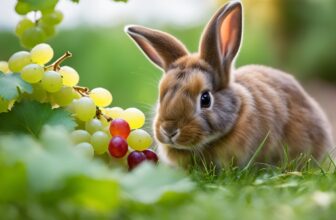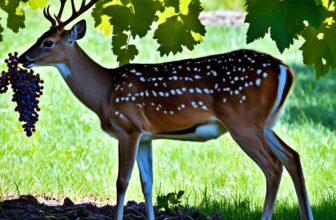Can Tortoises Eat Grapes? Safe Snack Guide
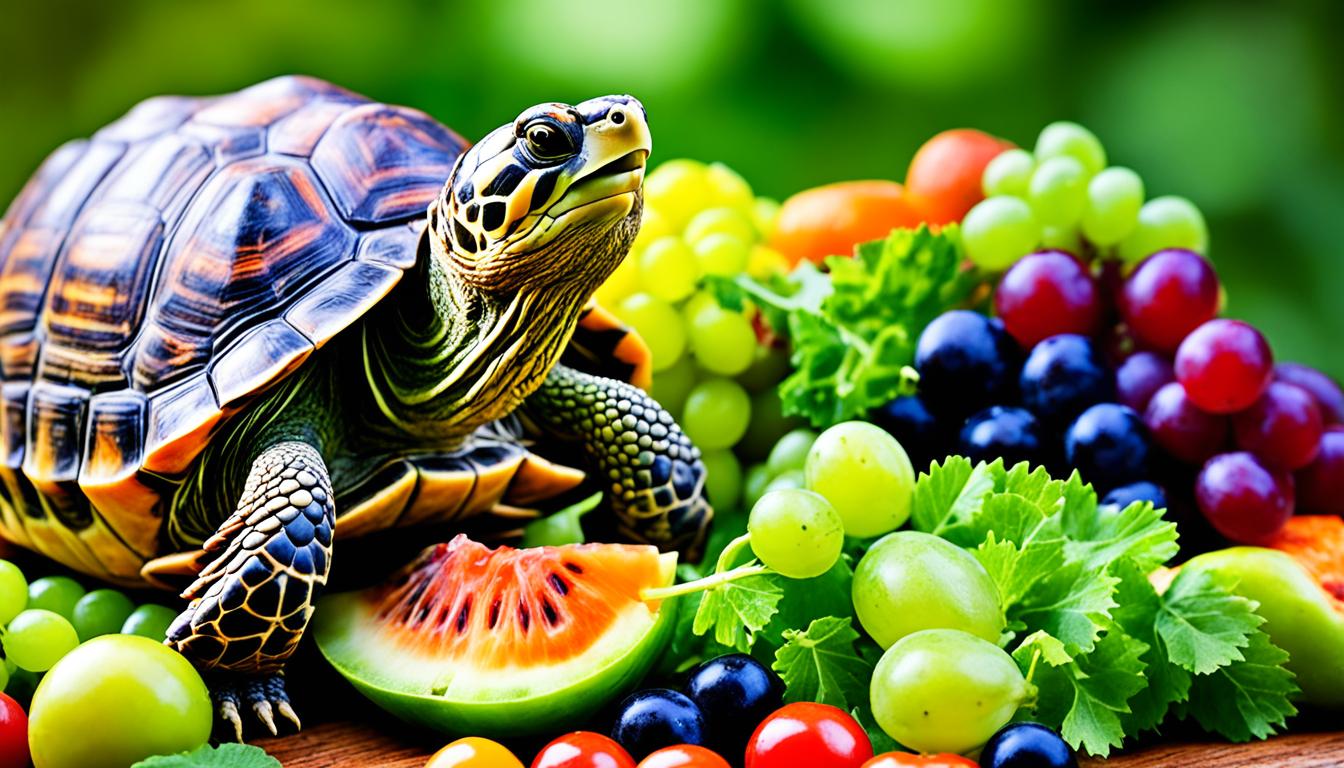
As pet owners, we often wonder about the dietary needs of our exotic companions, such as tortoises. While these shelled reptiles are primarily herbivorous, the question of whether they can safely enjoy the occasional grape often arises. In this comprehensive guide, we’ll explore the nutritional considerations and potential risks associated with feeding grapes to your beloved tortoise.
Key Takeaways
- Tortoises can safely consume grapes in moderation as an occasional treat.
- Grapes provide a sweet and juicy snack, but they should not make up a significant portion of a tortoise’s diet.
- Proper portion control and a balanced diet are essential to maintain your tortoise’s health and well-being.
- Offering a variety of leafy greens, vegetables, and other safe foods is crucial for a tortoise’s overall nutrition.
- Consult with a veterinarian to ensure your tortoise’s dietary needs are met while incorporating grapes safely.
Tortoise Diet Basics
Providing your tortoise with a proper diet is crucial for its overall health and well-being. To ensure your pet receives the necessary nutrients, it’s essential to understand the specific dietary requirements of its species. In the wild, many tortoise species inhabit hot, dry environments where food is scarce, requiring them to travel long distances to find sustenance. In captivity, it’s important to avoid overfeeding, as this can lead to health issues like shell growth deformities.
Feeding Frequency and Portion Sizes
The feeding frequency and portion sizes for your tortoise will depend on its age and species. Hatchlings and young tortoises should be fed daily or have their daily portion divided into two feedings, while adult tortoises can be fed daily or have one day off per week. The amount of food provided should be monitored based on the growth pattern of your tortoise species, aiming for steady, slow growth.
- Mediterranean tortoise species, such as the Spur Thighed and Hermann’s tortoise, aim for a weight gain of 1g to 3g per month.
- In the wild, tortoises (except Leopards and Sulcatas) feed on approximately 200 plant species annually.
- Salad items like lettuce typically have little nutritional value and contain minimal fiber, so they should be offered in moderation.
- Root vegetables such as Carrots and Parsnips should be limited due to their high carbohydrate content.
- Fresh drinking water must always be available for tortoises.
Tortoise species can be divided into two main groups based on their diet preferences. Some tortoise species, like the Red and Yellow-footed tortoises, can tolerate a small amount of fruit in their diet, while others, such as the Mediterranean tortoises, thrive on a mixed weed-based diet. Exceptions exist, like the African Sulcata, which is a true grazer and eats grass.
“Tortoises should be fed small quantities of food twice a day indoors, mimicking their natural grazing habits.”
It’s crucial to be mindful of the specific nutritional needs of your tortoise species and provide a varied and balanced diet to ensure their optimal health and longevity as exotic pets.
Variety is Key
Providing a wide variety of safe leaves, flowers, and other plant matter is crucial for a tortoise’s well-being. In the wild, many tortoise species feed on around 200 different plant species in a year, ensuring no single plant makes up the majority of their diet. In captivity, it’s nearly impossible to replicate such a diverse diet, but it’s important to avoid feeding your tortoise the same handful of plants repeatedly.
Some plants, such as those high in oxalic acid or goitrogens, should be offered in moderation. Whenever possible, allow your tortoise to graze naturally outdoors, ensuring there are no poisonous plants within reach. If your tortoise is housed indoors, provide a UVB light source, as UVB does not transmit through glass.
Natural Grazing and Sunshine
Allowing your tortoise to graze naturally in a secure outdoor enclosure is highly beneficial. Not only does it provide a more diverse range of plants for your tortoise to explore and consume, but it also exposes them to essential sunshine and natural grazing behaviors. This helps ensure your tortoise receives the necessary vitamin D and calcium required for optimal health and development.
When designing an outdoor enclosure, it’s recommended to provide an area that is at least 6 times as long and wide as the tortoise’s size. For example, a 6-inch tortoise should have an enclosure of at least 3 feet by 3 feet. The warmest spot in the enclosure should ideally be 95 degrees Fahrenheit, with the floor not exceeding 85 degrees Fahrenheit.
“Allowing your tortoise to graze naturally is crucial for their well-being and health.”
For indoor tortoises, ensuring they receive adequate UVB light is essential. UVB bulbs should produce UVB in addition to UVA, and they should be replaced at least every 6 months to maintain their effectiveness.
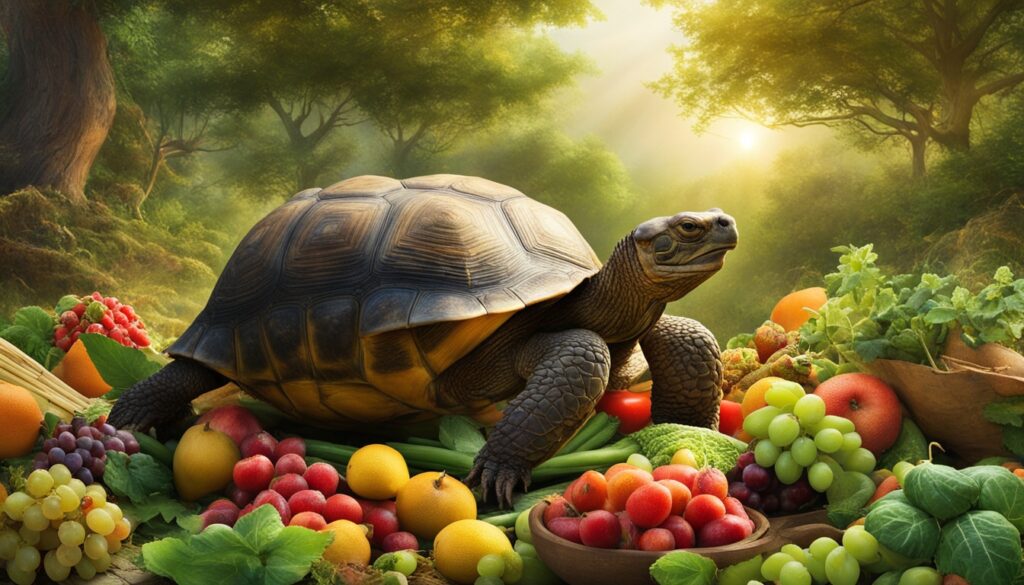
By offering a varied diet and providing opportunities for natural grazing and sunshine exposure, you can help ensure your tortoise thrives and lives a healthy, fulfilling life as an exotic pet.
Can Tortoises Eat Grapes?
As exotic pet owners, we’re often tempted to treat our beloved tortoises with the juicy, sweet delights of fruits like grapes. While tortoises may indeed find the taste of grapes irresistible, their digestive system is not primarily designed to handle the high sugar content in these fruits. Moderation is key when it comes to incorporating grapes into a tortoise’s diet.
Certain tortoise species, such as the Red-footed and Yellow-footed tortoises, can tolerate small amounts of fruit in their diet. However, for the majority of tortoise species, grapes and other fruits should be strictly limited. The high sugar levels in grapes can disrupt the delicate pH balance in a tortoise’s digestive tract, potentially leading to health issues down the line.
Instead, it’s best to focus on providing a fiber-rich diet of grasses, weeds, and calcium-rich leafy greens as the foundation of a tortoise’s meals. These nutrient-dense foods make up the vast majority of a healthy tortoise’s diet, typically around 85% of their daily intake.
- Grass should compose around 85 percent of a desert tortoise’s daily food intake.
- Offer cut grass mixed with about 50 percent tortoise-safe leafy greens such as collards, dandelion greens, endive, grape leaves, mustard greens, turnip greens, and watercress if unable to grow grass.
- Vegetables should make up the remaining 15 percent of a captive tortoise’s regular diet.
While grapes may be tempting treats, it’s crucial to limit their consumption and focus on providing a balanced, fiber-rich diet to ensure the long-term health and well-being of your tortoise. With proper care and nutrition, your shelled companion can thrive and live a long, vibrant life.
“Tortoises need plenty of calcium to maintain healthy shells, which can be supplemented with powdered supplements designed for reptiles.”
Calcium-Rich Foods
Calcium is a critical nutrient for tortoises, particularly for their shell and bone development. Providing a diet rich in calcium-containing foods is essential for maintaining the overall health and well-being of these fascinating exotic pets. Some excellent sources of calcium for tortoises include:
- Bok choy
- Collard greens
- Dandelion greens
- Grape leaves
- Prickly pear cactus
Leafy Greens and Vegetables
In addition to the calcium-rich options, leafy greens like kale, mustard greens, and turnip greens are great sources of calcium and other essential vitamins and minerals for tortoises. While vegetables can provide valuable nutrients, it’s important to limit those high in oxalic acid or goitrogens, such as spinach, rhubarb, and members of the Brassica family, to avoid potential imbalances in the tortoise’s diet.
| Calcium-Rich Foods for Tortoises | Nutritional Value |
|---|---|
| Bok Choy | High in calcium, vitamin A, and vitamin K |
| Collard Greens | Excellent source of calcium, vitamin C, and fiber |
| Dandelion Greens | Rich in calcium, iron, and antioxidants |
| Grape Leaves | Contain calcium, potassium, and vitamin C |
| Prickly Pear Cactus | High in calcium, fiber, and vitamin C |
Providing a varied and balanced tortoise diet that includes a range of leafy greens and vegetables is crucial for ensuring your exotic pet receives all the necessary calcium and other vital nutrients for their health and wellbeing.
“A calcium-rich diet is essential for the proper development and maintenance of a tortoise’s shell and bones.”
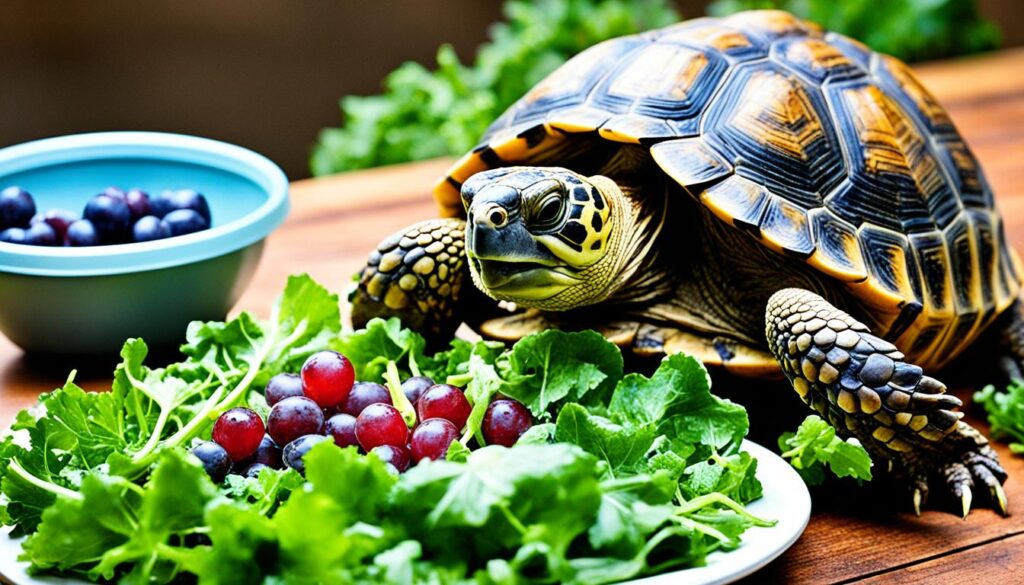
Conclusion
In conclusion, while can tortoises eat grapes may be a tempting treat, it’s crucial to understand the proper nutritional requirements and potential risks associated with feeding grapes to your pet tortoise. A balanced diet consisting primarily of a variety of fiber-rich grasses, weeds, and calcium-rich leafy greens is essential for your tortoise’s overall health and well-being.
By providing a diverse and carefully selected tortoise diet, you can ensure your tortoise receives all the necessary nutrients to thrive. While grapes can be offered as an occasional safe food for tortoises, it’s important to monitor their intake and potential digestive issues, as the high sugar content can lead to weight gain and other health problems, especially for species like the Sulcata tortoise.
Remember, proper preparation and serving guidelines should be followed when incorporating grapes or any new food item into your tortoise’s diet. Consulting with a veterinarian can also provide valuable insights on the best exotic pets feeding practices to ensure your tortoise’s long-term well-being. By prioritizing a balanced and diverse diet, you can help your tortoise thrive and enjoy a healthy, happy life.



